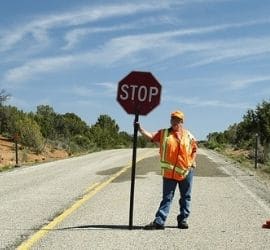What Is Straight Line Depreciation?
 Straight line depreciation is a method of calculating depreciation and amortization. Also known as straight line basis, it is the simplest way to work out the loss of value of an asset over time. Straight line basis is calculated by dividing the difference between an asset’s cost and its expected salvage value by the number of years it is expected to be used.
Straight line depreciation is a method of calculating depreciation and amortization. Also known as straight line basis, it is the simplest way to work out the loss of value of an asset over time. Straight line basis is calculated by dividing the difference between an asset’s cost and its expected salvage value by the number of years it is expected to be used.
Using this method of depreciation, the cost of a fixed asset is reduced uniformly over the useful life of the asset. Since the depreciation expense in each period is the same, the carrying amount of the asset on the balance sheet declines in a straight line. Due to its simplicity, the straight-line method of depreciation is the most common depreciation method.
There are different methods in accounting to handle depreciation expense. The challenge is determining how much to expense and which method to use. The simplest and most common method accountants use to determine annual depreciation expense is the straight line basis method. To calculate straight line basis, take the purchase price of an asset and then subtract the salvage value. The salvage value is the estimated sales or scrap value of an asset when it is no longer expected to be needed. Then divide the resulting figure by the total number of years the asset is expected to be useful, referred to as the useful life in accounting terms.
Key Points
- Straight line depreciation is a method of calculating depreciation and amortization. These are then used to expense an asset over the period of its useful life.
- Considers an asset’s useful life and salvage value – It is calculated by dividing the difference between an asset’s cost and its expected salvage value by the number of years it is expected to be used.
- Simple to calculate and use – Straight line depreciation is popular because it is easy to calculate and understand, although it also has several drawbacks.
Straight Line Depreciation Formula
The straight line depreciation formula is used to depreciate an asset uniformly over its useful life.
Annual Depreciation Expense = (Cost of Asset – Salvage Value) / Useful Life of Asset
- The cost of the asset is the purchase price of the asset
- Salvage value is the value of the asset at the end of its useful life
- The useful life of asset represents the number of periods/years in which the asset is expected to be used by the company
How to Calculate Straight Line Depreciation
The straight line calculation steps are simple to follow and widely used.
- Cost – Determine the cost of the asset.
- Salvage value – Subtract the estimated salvage value of the asset from the cost of the asset to get the total depreciable amount.
- Useful life – Determine the useful life of the asset.
- Annual depreciation expense – Divide the total depreciable amount (from step 2) by the estimated useful life (step 3) to arrive at the annual depreciation amount.
Example of Straight Line Basis
For example, Company E buys a piece of equipment for $11,000. The equipment has an expected life of 10 years and a salvage value of $1000. Using the straight line depreciation formula, you would divide the difference between the salvage value and the cost of the equipment by the expected life of the equipment. The straight line depreciation yearly expense for this piece of equipment is ($11,00 – $1000) / 10 = $1,000. In this case, the company cannot expense away from the total value of the equipment as it has a useful life of ten years. Instead of writing off the full cost of the equipment immediately, the company should expense $1,000 per year for ten years. The company will continue to expense the accumulated depreciation until only $1000 is left on the books as the salvage value of the equipment.
Straight Line Depreciation – Example 2
A Company purchases a machine for $200,000 with an estimated salvage value of $50,000 and a useful life of 5 years. The straight line depreciation for the machine would be calculated as follows:
- Cost of the asset: $200,000
- Cost of the asset – Estimated salvage value: $200,000 – $50,000 = $150,000 total depreciable cost
- The useful life of the asset: 5 years
- Divide step (2) by step (3): $150,000 / 5 years = $30,000 annual depreciation amount
Therefore, the Company would depreciate the machine at the amount of $30,000 annually for 5 years.
Understanding Straight Line Depreciation
In accounting, there are many different methods that are available to match sales and expenses to the period in which they are incurred. One convention that companies embrace is referred to as depreciation and amortization. Companies use depreciation for physical assets and amortization for intangible assets such as patents and software. Both approaches are used to expense an asset over a longer period of time instead of just the period it was purchased. Companies are usually required to stretch the cost of assets over different time frames. This lets them properly reflect the benefit from the use of an asset without deducting the full cost from net income.
Accountants use the straight line depreciation method because it is the easiest to compute and can be applied to all long-term assets. However, the straight line method does not accurately reflect the difference in usage of an asset and may not be the most appropriate value calculation method for some depreciable assets. For example, due to rapid technological advancements, a straight line depreciation method may not be suitable for an asset such as a computer. A computer would face larger depreciation expenses in its early useful life and smaller depreciation expenses in the later periods of its useful life, due to the quick obsolescence of older technology. It would be inaccurate to assume a computer would incur the same depreciation expense over its entire useful life. (Source: corporatefinancialinstitute.com)
Advantages and Disadvantages of Straight Line Basis
Accountants like the straight line depreciation method for a number of reasons.
- Easy to use – It is simple to calculate and is easy to use
- Fewer accounting errors – It renders fewer errors over the life of the asset, Unlike more complex methodologies, such as double declining balance, straight line is simple and uses just three different variables to calculate the amount of depreciation each accounting period.
- Uniform results – Depreciation expenses are the same amount every accounting period.
However, the simplicity of straight line basis is also one of its biggest drawbacks. One of the most obvious pitfalls of using this method is that the useful life calculation is based on guesswork. For example, there is always a risk that technological advancements could potentially render the asset obsolete earlier than expected. Moreover, the straight line basis does not factor in the accelerated loss of an asset’s value in the short-term. It also ignores the likelihood that it will cost more to maintain as it gets older.
When should You use the straight Line Depreciation Method?
Depreciation is an expense, just like any other business write-off. So you’ll want to make sure you calculate depreciation properly. Most businesses use straight-line depreciation for their books, although some use the double declining or sum of years method. This is because other methods result in more write-offs near the beginning of life on an asset.
For example, the IRS has a very specific depreciation method called the Modified Accelerated Cost Recovery System, or MACRS. In some cases, the IRS might even let you deduct the full cost of certain assets (like computers. software, and office furniture) during its first year of use. This can eliminate the need for depreciation methods altogether.
IRS Recovery Periods
- Office furniture, fixtures, and equipment: 7-10 years
- Information systems, including computers and peripheral equipment: 5 years
- Light general-purpose trucks: 5 years
- GDS (General Depreciation System) – GDS is most frequently the recommended approach to take; in Publication 946, “How to Depreciate Property” PDF (page 32), the IRS states “You generally must use GDS unless you are specifically required by law to use ADS or you elect to use ADS.” Under GDS, you can opt for either the straight-line or the reducing-balance method – what the IRS terms the declining-balance method – discussed in the next section.
- ADS (Alternative Depreciation System). Under ADS, your only option is to use straight-line depreciation.
Other Methods of Depreciation
In addition to straight line depreciation, there are also other methods of calculating the depreciation of an asset. Different methods of asset depreciation are used to more accurately reflect the depreciation and current value of an asset. A company may elect to use one depreciation method over another in order to gain tax or cash flow advantages.
- Double-declining balance method – The double-declining balance method is a form of accelerated depreciation. It means that the asset will be depreciated faster than with the straight line method. The double-declining balance method results in higher depreciation expenses at the beginning of an asset’s life and lower depreciation expenses later. This method is used with assets that quickly lose value early in their useful life. A company may also choose to go with this method if it offers them tax or cash flow advantages.
- Units of production method – The units of production method is based on an asset’s usage, activity, or units of goods produced. Therefore, depreciation would be higher in periods of high usage and lower in periods of low usage. This method can be used to depreciate assets where variation in usage is an important factor, such as cars based on miles driven or photocopiers on copies made.
Up Next: Amazon Price Match Policy – No More Says Amazon
Have you ever bought something on Amazon only to see the price drop after your purchase? Most likely, it’s happened to just about everyone who buys something on Amazon. It used to not be a problem because most people didn’t continue comparing prices once they made a purchase. But now, Amazon has become so dominant in its online market position, the company is compelled to change its policy regarding price changes. Amazon still offers low prices – often the lowest price available. But, if you’re looking for an Amazon price match policy to ensure you get the lowest possible rate offered by any retailer, you’ll have to look somewhere other than Amazon.



